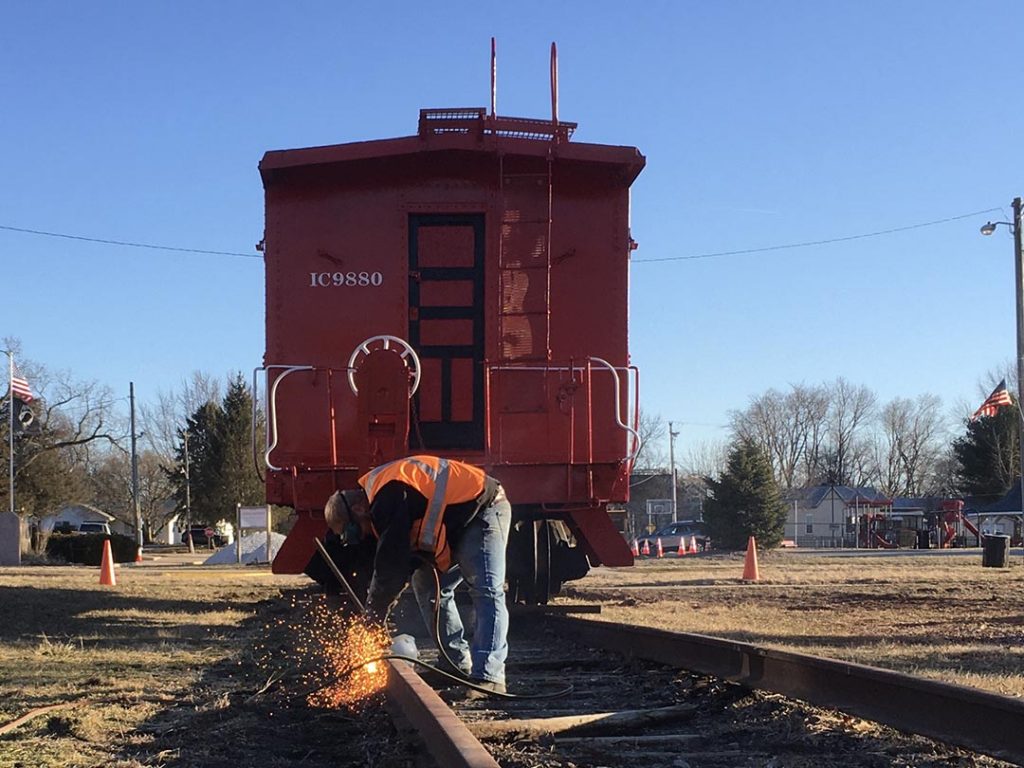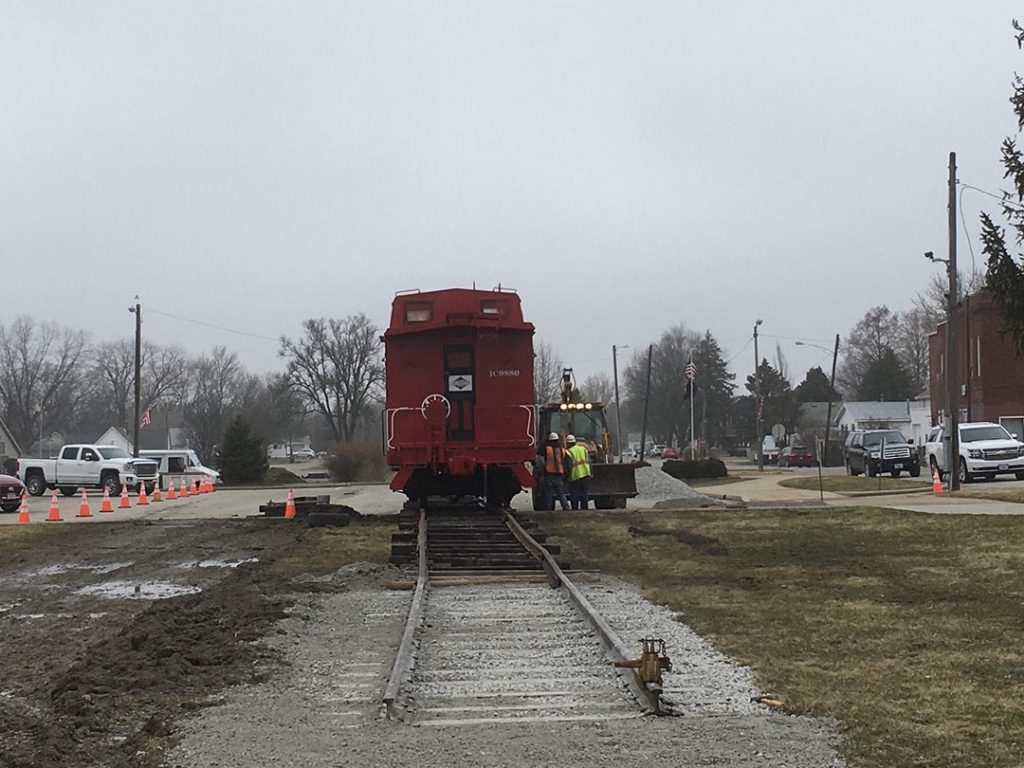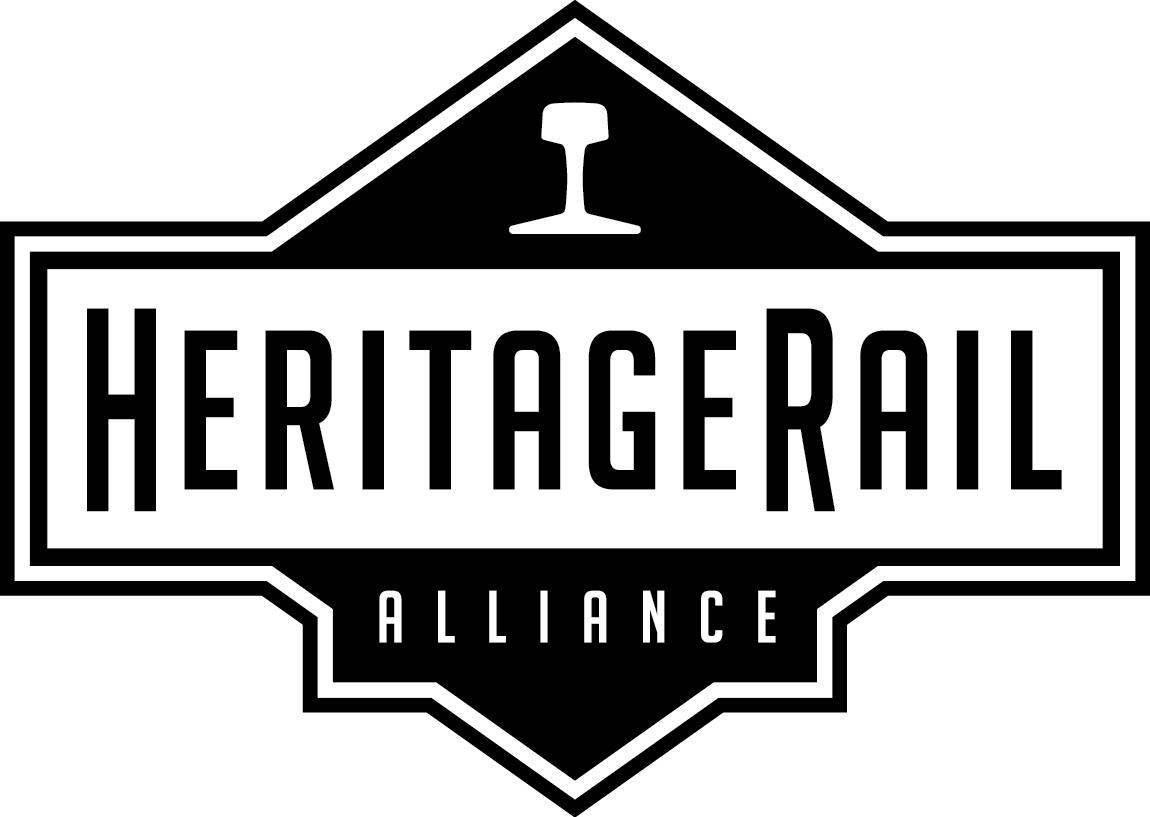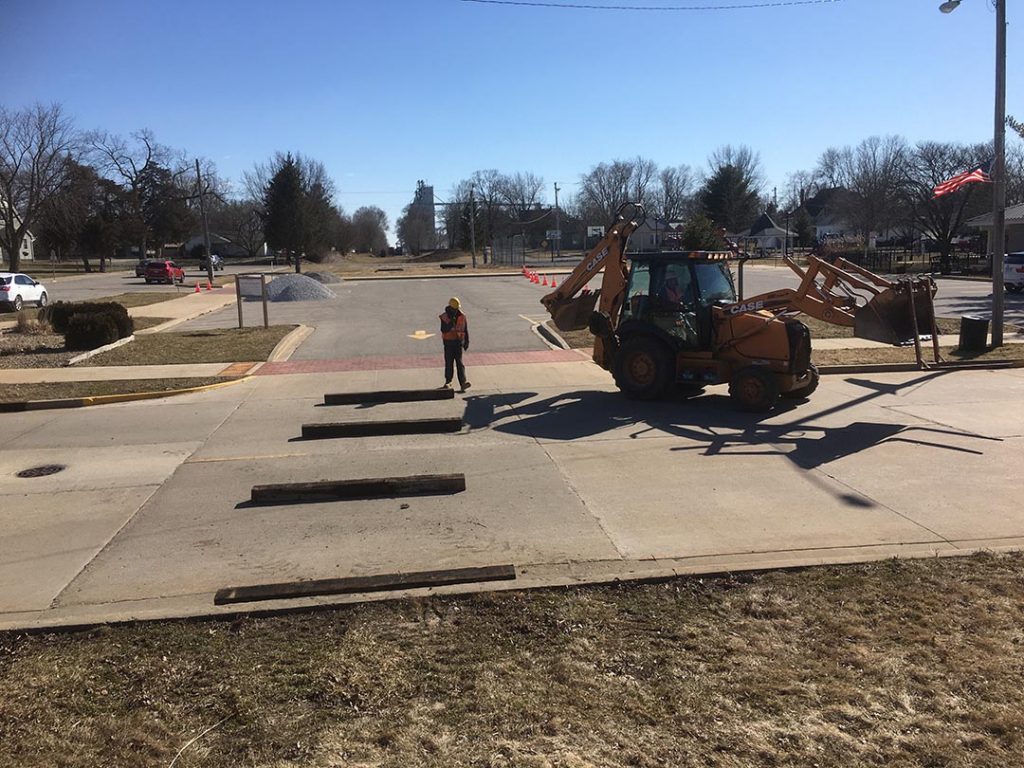
By Thomas Dyrek, Heyworth Railroad Museum
In early March of 2020, the Heyworth, Illinois Railroad Museum relocated our 1941 Illinois Central caboose No. 9880 two blocks to a new display site in the village park. We had been wanting to relocate for quite some time for improved security, room to expand, and for a place where more people can come and visit the caboose. Much to HRRM’s relief, the cost of the move was covered by the town. Fry & Harris Railroad Contractors of Geneseo, IL was contracted to handle the moving process.
Work started in the afternoon hours of Friday, March 6. Main Street was closed and people gathered at the caboose to watch the moving process begin. Fry & Harris was to install a 400-foot temporary track from the original display site to the new one. At 2:18 PM, the first ties were laid, and a few minutes later, the first rail was brought in.

The first rails are laid across Main Street. Both display sites are located on the right of way of the IC’s Gruber Line, abandoned in 1986. This will be the first train to cross Main Street in Heyworth since the line was abandoned.

After several hours of laying ties and rails, workers bolt the temporary track to the old display site track. Fry & Harris owner Jerry Fry (right) told me that most of the rails and tools they were using dated back to before WWII.
By the end of the day, Fry & Harris had laid approximately 350 feet of track from the old display site to a parking lot adjacent to the park. Old rails behind the caboose were cut in preparation for removal. Fry & Harris would use some of the track materials from the old site at the new one, but would also take several pieces for reuse on other projects. Tomorrow’s task: bolting and spiking the rails and ties together and moving the caboose.

Cutting the old display site rails from behind the caboose. This was a rather bittersweet moment for IC fans, as this track was original to the Gruber Line.
On Saturday morning, museum volunteers enjoyed breakfast from a nearby Subway and watched workers begin fastening the track together. This was a slow but steady process, and by 4:00 that afternoon, the caboose was ready to be moved.

Fry & Harris used two special jacks for raising the rails above the ties to slide tie plates in for spiking.
At 4:08 PM, No. 9880 began to move. It would be brought across the street into the parking lot and parked there for a few days while the new display site was prepared. Dozens of onlookers watched as the caboose was slowly moved down the temporary track with a tractor brought in by Fry & Harris.

No. 9880 is eased across Main Street. To protect the caboose, a tire was placed over the coupler while the tractor pushed it forward.

After a few feet, the tractor was moved around to the front to pull it the rest of the way. Top speed for the move was no more than five miles an hour.

Once at the parking lot, the caboose was chained to the rail to prevent movement. HRRM volunteers opened the caboose for a few minutes to let those who came to watch the move have a look inside. Meanwhile, Fry & Harris workers quickly went to work dismantling the track behind the caboose in order to get Main Street reopened.

The ballast that was to go in the new display site was conveniently placed in a location where one could climb on it to get some good photos of No. 9880 in this unusual spot. In the coming days, the ballast would be removed from this location and poured in the new site.
On Thursday, March 12, the new display site was ready and Fry & Harris went to work preparing to move the caboose for the final 50 feet into its new home. New rails and ties had been laid in the ballast, and the new site looked much better than the old one. One of the few downsides to the new location is that there is only room for the caboose. However, the city has told the HRRM that should another railcar be acquired for the display, the track can be extended.

A little fun before the move: HRRM volunteer Thomas Dyrek uses an antique railcar mover to move the caboose forward a few inches before the tractor comes in to push it the rest of the way. This was backbreaking work and would’ve taken over a month if the tractor wasn’t used. Railcar movers are similar to crowbars. The bar is positioned against the wheel and the operator pushes down on it which moves the wheel forward. Photo by Lewis Marien.

With the playing aside, workers attach the tractor to the caboose to move it into the new display site.

Done. Workers chain the wheels to the rail for the final time and the tractor is detached from the caboose. For the rest of the day, Fry & Harris would remove what was left of the temporary track.

The Fry & Harris crew poses in front of the caboose at the new display site. The Heyworth Railroad Museum would like to give a huge thank you to them for their careful, professional work. For more information on their company, check out their website at www.fryandharrisrailroad.com.
To see a video of the moving process, go to https://www.youtube.com/watch?v=1xJ19rSVMps
For more information on the Heyworth Railroad Museum, see a previous article about it here. Also, follow us on Instagram @heyworthrailroadmuseum.


